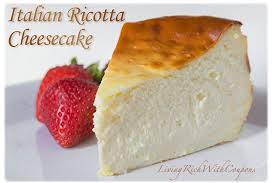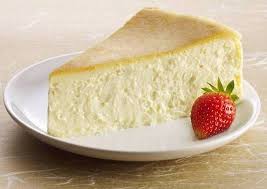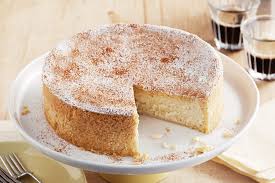Ricotta Cheese Cake Recipe – Rossella’s Cooking with Nonna
Ricotta Cheese Cake Recipe
Rossella’s Cooking with Nonna
*

If you enjoy cheese cake you will love this special recipe. Ricotta Cheesecake will put all other cheesecakes to shame in my opinion. Take a moment and let Rossella share her family recipe.
The production of ricotta in the Italian peninsula dates back to the Bronze Age. In the second millennium BC, ceramic vessels called milk boilers started to appear frequently and were apparently unique to the peninsula. These were designed to boil milk at high temperatures and prevent the milk from boiling over. The fresh acid-coagulated cheeses produced with these boilers were probably made with whole milk.

However, the production of rennet-coagulated cheese overtook the production of fresh whole-milk cheeses during the first millennium BC. Bronze cheese graters found in the graves of the Etruscan elite prove that hard-grating cheeses were popular with the aristocracy. Cheese graters were also commonly used in ancient Roman kitchens. Unlike the fresh acid-coagulated cheese, aged rennet-coagulated cheese could be preserved for much longer.
The increased production of rennet-coagulated cheese led to a large supply of sweet whey as a byproduct. Cheesemakers then started using a new recipe, which used a mixture of whey and milk to make the traditional ricotta as it is known today.

The ancient Romans made ricotta, but writers on agriculture such as Cato the Elder, Marcus Terentius Varro, and Columella do not mention it. They described the production of rennet-coagulated cheese but did not write about milk boilers or acid-coagulated cheese. A likely reason is that ricotta was not profitable because its very short shelf life did not allow distribution to urban markets. Ricotta was most likely consumed by the shepherds who made it. Even so, evidence from paintings and literature indicates that ricotta was known and likely eaten by Roman aristocrats as well.


